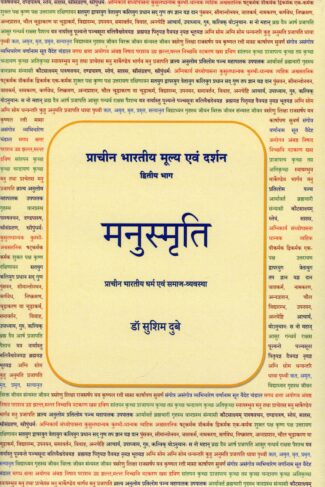

Taittiriya Upanisad ...
Taittiriya Upanisad (PB)
With the Original Text in Sanskrit and Roman Transliteration by: Swami Muni Narayana PrasadThe Taittiriya Upanisad is offered in three chapters treated singly by the author who reveals the invisible thread that runs through them. The analytical commentary results from the insights he has gained from interactions over the years.
Original price was: ₹390.00.₹351.00Current price is: ₹351.00.
ISBN: 9788124612002
Year Of Publication: 2009
Edition: 3rd
Pages : 211
Bibliographic Details : Glossary; Bibliography; Index
Language : English
Binding : Paperback
Publisher: D.K. Printworld Pvt. Ltd.
Size: 23 cm.
Weight: 500
The Upanishads capture the quintessence of Indian spiritual wisdom unfolding deep-set, highly perceptive reflections on human existence and how it is related to cosmic mystery. Authored by enlightened seers, at different times, during 1500-200 b.c., the Upanishadic message inheres neither a promise of heaven, nor scare of hell. Rather, it is a magnificent vision that raises human consciousness to sublime heights. The Taittiriya appended to the Krishna (Black) Yajur Veda is one of best among the principal Upanishads. And, schematically, is offered in three chapters, entitled: (1) Shiksha Valli, (2) Brahmananda Valli, and (3) Bhrigu Valli which each Swami Muni Narayana Prasad treats singly, superbly revealing the invisible thread that goes through all of them. With origjnal Sanskrit text, its Roman transliteration and easy-to- understand English paraphrase, this stimulating, at once analytical commentary grows from Swami Muni Narayana Prasads prolonged reflections on the Taittiriya Upanishad, coupled with the insights he acknowledges to have gained from Nataraja Gurus discourses on different Upanishadic themes, Narayana Gurus mystico-philosophical poems, and numerous sessions of intellectual interaction with different groups of scholars.
Preface
Introduction
1. Shiksha Valli
Section I
Section II
The Word and its Sound — A Word that Touches Three Worlds — Shiksha
Section III
Both Together — Samhita Revalued — The Structure of the Combinations — A Total Scheme
Section IV
Indra of the Vedas Revised and Revalued — The Truth Hidden by Thought — Functional Unity of Body and Mind — No Worldly Interest — Svaha — Renown — Love and Compassion
Section V
The Vyahritis and the Cosmos — The Cosmic Egg — The Vyahritis Revalued — The Vyahritis as Symbols — The Worlds — Gods Become Worshippers
Section VI
The Space in the Heart — The Mind-Stuff — The Source of Indra — Fire as Bhuh — The Sun as Suvah — Air as Bhuvah — Mahah as Brahman — Selfhood — The Form of Brahman
Section VII
Another Vedic Concept Revalued — Two Sets of Three Five-Fold Groups — Mutual Support of the Five-Fold Groups
Section VIII
ALL This is AUM — In the Vedic Setting — ALL This is AUM — In the Vedantic Sence
Section IX
Another Revaluation — Svadhyaya and Pravacana — Truth — Austerity — Shama and Dama — The Sacred Fires — The Fire-Sacrifice — Guests — Humanity — Progeny
Section X
Fame — Righteousness of the Self — Food and Freedom — Clarity of Mind
Section XI
Meant for Whom? — Truth and Righteousness — Self-Study — Gifts to the Guru — Line of Progeny — Kushala — Bhuti — Self-Study and Teaching — An Ethical Problem
Section XIII
2. Brahmananda Valli: Shanti Patha
Section I
The Knower of Brahman Attains the Supreme — Brahman — Two Perspectives — A Unitive Vision — The Following has been said — Three Attributes — Reality (Satyam) — Knowledge (Jnanam) — Infinity — Placed Within the Cavern — The Transcendental Space — He Realizes All Desires — The Cavern of Ignorance — Food, Happiness and Earth — A Structural System — Space, Air, Fire, Water and Earth — No Creation — The Order of Negation — The Theory of Five Sheaths — Body as the Self
Section II
The Eldest Born — Food as a Non-Dual Value — Food as the All-Healing Medicine — A Complementary Vision — The Human Form — The Pranas
Section III
The Life Span of All — The Expanding World of Interests — The Body-Self Relationship — Manas — The Human Form
Section IV
Applied Knowledge — Faith — Rita and Satya — Yoga — Mahas
Section V
Yajna and Karma — The Primeval (Jyeshtham) — The Gods Who Meditate — Living Sins While in the Body — Attaining All Desires — Priyam — Moda and Pramoda — Ananda — Brahman
Section VI
Body and Soul — Many Questions — No Direct Answer — He Desired — Creation as a Pastime — Dualities — Austerities — He Entered into it — This World in the Beginning was Non-Existent — Therefrom was the Existent Born — The Well-Made — It is Joy in Essence — Fear and Fearlessness — Answer to the Question
Section VIII
Section IX
3. Bhrigu Valli
Section I
Section II
Section III
Section IV
Section V
Section VI
Section VII
Section VIII
Section IX
Section X
Glossary
Bibliography
Index















